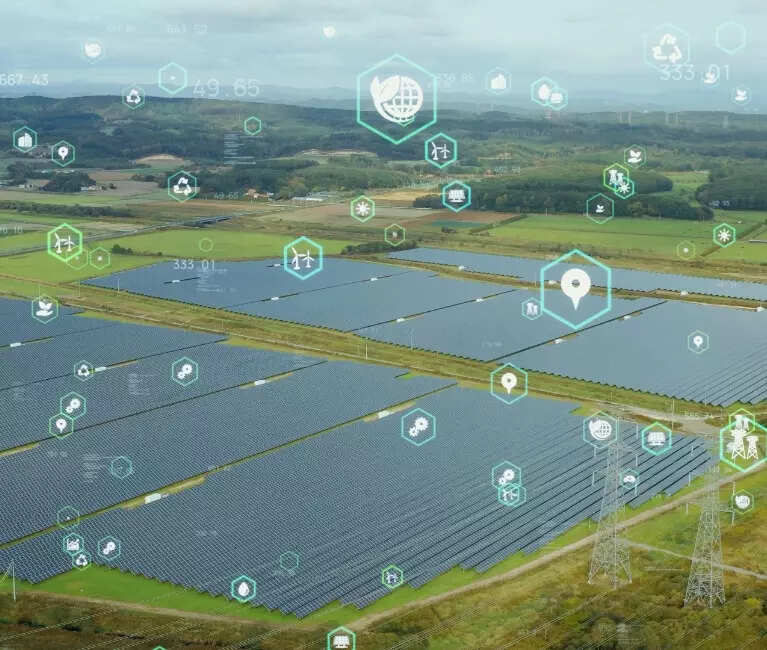
On June 6, 2022, the Ministry of Power (MoP), Government of India (GoI) notified the Electricity (Promoting Renewable Energy Through Green Energy Open Access) Rules, 2022 (henceforth referred to as “Green Open Access Rules”). After nearly 20 years since the enactment of the Electricity Act, 2003 (EAct). These rules operationalise important objectives of the legislation.
To put it mildly, this could be a watershed moment in India’s journey towards a clean energy future. So what does the Green Open Access Rules say? First, it reduces the limit on the minimum contracted demand or sanctioned load to access green energy through the open access process. The earlier limit was 1MW. This has been reduced to 100 kW, allowing thousands of potential consumers to access the open access route to procure renewable energy. For captive consumers of green energy, even the 100kW limit has been removed.
This is indeed a defining moment, since the 1MW limit had limited and dissuaded many consumers, particularly MSMEs, from accessing and procuring green energy. Reducing this limit to 100kW creates new opportunities for smaller electricity consumers, especially small businesses, who are looking to purchase renewable energy. Consumers shift to clean energy for multiple reasons – from wanting to practise sustainability, to lowering their electricity costs, and to respond to their investors and buyers who are increasingly requiring greening of the supply chain, especially for export markets.
At the same time, the electricity utility company’s (Discom) operational interest has been kept in mind. The Green Open Access Rules require those seeking green energy from the Discom to commit for a minimum period of one year. This will prevent the gaming of the system where the Discom is being seen as a fall-back option, thus affecting its ability to plan for effective power purchase. Equally relevant is the requirement for a minimum of 12-time blocks (3 hours) during which the open access quantum procured by a consumer is not changed. This measure seeks to avoid a high variation in demand to be met by the Discom.
The second is the definition of green energy. The Green Open Access Rules adopts a wide and inclusive definition of green energy: “…the electrical energy from renewable sources of energy including hydro and storage (if the storage uses renewable energy) or any other technology as may be notified by the Government of India from time to time and shall also include any mechanism that utilises green energy to replace fossil fuels including production of green hydrogen or green ammonia…”.
This is a welcome step since India’s 2070 net zero target will require multiple strategies, fuel changes, and approaches. Hard-to-abate sectors such as industry, transport, shipping, and aviation will need to move to cleaner fuels. Recognizing the purchase of green hydrogen/green ammonia by obligated entities towards meeting their Renewable Purchase Obligation (RPO) is a good step. However, green hydrogen should receive all the incubatory support possible, and we must also look to other technologies too. Solar thermal, for example, lends itself well to the Indian context, while also aligning well with the “Make in India” mantra as most of the supply chain is localised. Perhaps GoI should explore a Renewable Heat Obligation (RHO) alongside existing demands for a Storage Purchase Obligation (SPO) to accelerate growth in these sectors.
Third, the Green Open Access Rules includes the provision for consumers to requisition green energy directly from their respective Discoms. This tariff is to be determined by the appropriate State Electricity Regulatory Commissions (SERCs) and is also expected to ensure that such special requisitions do not burden the remaining (subsidized) consumers on the system. There are opportunities for demand aggregation and economies of scale, and Discoms could leverage their experience of energy contracting to enable access to green energy for aggregate demand of MSMES and small businesses. There is more analysis required by SERCs and Discoms before this becomes more mainstream, but there are many interesting lessons from utilities elsewhere on this.
A few additional features of the Green Open Access Rules merit mention. It lays the marker on possible “charges” that can be levied for open access transactions involving green energy. It seeks certainty in Cross Subsidy Surcharges (CSS) [a long-standing request from consumers] and clamps down on the imposition of Additional Surcharges (AS) if the consumer is anyway paying fixed charges to the Discom. Such forward-looking indexation of cross-subsidies and additional surcharges with specific caps, helps bring more stability and certainty in the system. And they also provide a nudge to consumers to move to renewables by providing priority to open access transactions involving non-fossil fuel sources vis-à-vis fossil fuel transactions.
A central nodal agency to operate a single-window system for all green energy open access applications is also proposed. One hopes this centralized registry doesn’t end up being a bottleneck, and that it functions with transparency. And finally, on the issue of banking, the Green Open Access Rules permits banking at least every month (bringing it down from 12 months) upon payment of appropriate charges. The world is seeing a shift towards 24×7 hourly matching of renewable energy with the corresponding load. Such time stamping of the exact nature of energy consumed can prevent greenwashing and achieve true decarbonisation. Hence, while monthly banking is a starting point, India should be moving towards 24×7 matching.
Overall, the Green Open Access Rules brings in a much-needed shakeup in the Indian energy space. The baton now passes to the regulators, implementing agencies and consumers to reap the benefits, and accelerate India’s clean energy transition.
(Deepak Sriram Krishnan, Associate Director, WRI India & Bharath Jairaj, Director, Energy, WRI India)